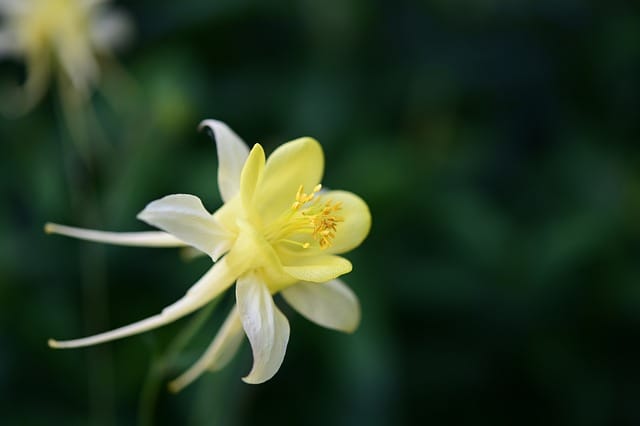How to grow Columbines
The Columbine flower (Aquilegia spp

In this article:
- Introduction to Columbines
- Choosing the Right Variety
- Selecting a Growing Site
- Soil Preparation and Planting
- Watering and Fertilizing Guidelines
- Sunlight and Temperature Requirements
- Pruning and Deadheading Techniques
- Dealing with Common Pests and Diseases
- Propagation Methods
- Overwintering Columbines
- Tips for Staking and Supporting
- Creative Companion Planting Ideas
- Troubleshooting Common Challenges
- Enjoying the Beauty of Columbines
- Frequently Asked Questions (FAQs)
- Additional Resources and References
Introduction to Columbines
The Columbine flower (Aquilegia spp.) is a beautiful perennial plant that adds elegance and color to any garden. Native to North America, Columbines come in various stunning colors and unique flower shapes, making them a favorite among gardeners. This article aims to provide you with a comprehensive guide on how to successfully grow and care for Columbines in your own garden.
Choosing the Right Variety
When it comes to choosing the right variety of Columbine, several factors should be considered. These include flower color, flower shape, height, and blooming season. Some popular varieties include 'Songbird Bluebird', 'Colorado Violet and White', and 'McKana Giants'.
Selecting a Growing Site
Columbines prefer a location with partial shade to full sun. They thrive in well-drained soil with a slightly acidic to neutral pH level. It is important to choose a site that provides adequate air circulation to prevent diseases.
Soil Preparation and Planting
Before planting Columbines, prepare the soil by removing weeds and loosening it with a garden fork. Amend the soil with organic matter such as compost to improve drainage and provide essential nutrients. Dig a hole that is slightly larger than the plant's root ball, place the plant in the hole, and backfill with soil, gently firming it around the roots.
Watering and Fertilizing Guidelines
Columbines require regular watering, especially during hot and dry periods. However, it is important not to overwater, as they are prone to root rot. Water deeply, allowing the soil to dry slightly between waterings. Apply a balanced fertilizer during the growing season to promote healthy growth and abundant blooms.
Sunlight and Temperature Requirements
Columbines thrive in partial shade to full sun. While they can tolerate direct sunlight, providing some shade during the hottest part of the day can help prevent scorching. They are generally hardy in USDA zones 3-9, with some varieties being more cold or heat tolerant.
Pruning and Deadheading Techniques
To encourage continuous blooming, it is important to deadhead spent flowers regularly. This involves removing the faded blooms, cutting back to the nearest leaf or lateral bud. Additionally, pruning in early spring can help promote compact growth and prevent the plants from becoming leggy.
Dealing with Common Pests and Diseases
Columbines can be susceptible to pests such as aphids, leaf miners, and caterpillars. Monitoring your plants regularly and taking appropriate action, such as using insecticidal soap or organic pest controls, can help prevent these issues. Powdery mildew and rust are common diseases that can affect Columbines. To prevent their occurrence, avoid overhead watering and ensure proper air circulation.
Propagation Methods
Columbines can be propagated through various methods, including seed sowing, division, and root cuttings. Each method has its advantages and can be chosen based on your preferences and available resources. Collecting seeds from mature plants and sowing them in early spring is a popular propagation method.
Overwintering Columbines
While Columbines are generally hardy, providing some winter protection can ensure their survival in colder regions. Mulching around the plant base with a thick layer of organic mulch can help protect the roots and retain moisture. Cut back the foliage in late fall to prevent disease and pest issues.
Tips for Staking and Supporting
Taller varieties of Columbines might require staking to prevent them from toppling over. Install stakes or place supports around the plant early in the growing season to avoid damaging the roots later. Tie the stems to the stakes using soft ties or garden twine, allowing room for growth.
Creative Companion Planting Ideas
Columbines pair well with various plants and can contribute to stunning combinations in your garden. Plant them alongside other spring-flowering perennials such as bleeding hearts, foxgloves, or daffodils for a beautiful display. They also make great companions for ferns or hostas in shaded areas.
Troubleshooting Common Challenges
Despite their beauty, Columbines can face challenges like any other plant. Some common issues include poor blooming, yellowing leaves, or weak growth. Understanding the potential causes and taking appropriate actions, such as adjusting watering or fertilizing, can help overcome these challenges and ensure healthy plants.
Enjoying the Beauty of Columbines
Once your Columbines are in full bloom, take time to appreciate their beauty. Admire their unique flower shapes and vibrant colors. Consider cutting some flowers to bring indoors or share with friends and family. Columbines also attract pollinators like butterflies and hummingbirds, making your garden a haven for wildlife.
Frequently Asked Questions (FAQs)
Q: How long do Columbines bloom?
A: Columbines typically bloom for 4-6 weeks, but this can vary depending on the variety and growing conditions.
Q: Can Columbines be grown in containers?
A: Yes, Columbines can be grown in containers as long as they have adequate drainage and are placed in a location with suitable light conditions.
Q: Do Columbines reseed themselves?
A: Yes, Columbines are known for their ability to self-seed. This can be both an advantage and a challenge, depending on your gardening preferences.
Additional Resources and References
For further information and detailed guidelines on growing Columbines, check out the following resources:
- Book: "The Gardener's Guide to Growing Columbines" by Robert Nold
- Website: The National Gardening Association - Columbines
- Garden Center: Local nurseries and garden centers are excellent sources of advice and guidance.
